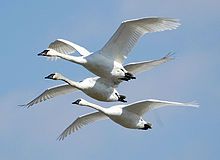 Exploring the 12 Days of Christmas History and Life in the 18th Century
Exploring the 12 Days of Christmas History and Life in the 18th Century
By Christine Henrichs – originally published in Backyard Poultry Magazine (2013)
This is part of a series based on the popular Carol – that starts – ‘On the First Day of Christmas. my True Love sent to me – a Partridge in a Pear Tree.’
I have been running this series over the Christmas Holidays – starting with Part 1. You can find the full text of the Carol HERE.
Officially the 12th Day of Christmas is the 5th of January – or as Wikipedia says The Twelve Days of Christmas, also known as Twelvetide, is a festive Christian season celebrating the Nativity of Jesus Christ. In most Western ecclesiastical traditions, “Christmas Day” is considered the “First Day of Christmas” and the Twelve Days are 25 December – 5 January, inclusive.
However many communities actually celebrate Christmas on the 6th of January, Epiphany, instead of the 25th December.
This series, based on the article in the American Poultry Magazine, has attempted to link all the Gifts in the Carol with either poultry or a species of birds, and up to the 7th Day, it sort of works.
When it comes to 8 Maids a-Milking , 9 Ladies Dancing, 10 Lords a-Leaping, 11 Pipers Piping and 12 Drummers Drumming, I’m not sure you can stretch the analogy that far! People have tried to find various links, including Hugh D. McKellar, a Canadian hymnologist, who published an article, in 1979 – “How to Decode the Twelve Days of Christmas”. He suggested that “The Twelve Days of Christmas” lyrics were intended as a catechism song to help young Catholics learn their faith, at a time when practising Catholicism was criminalised in England (1558 until 1829). This hypothesis has now been found to be incorrect! So who knows?
So, I’m going to stop at:
Seven Swans A-Swimming“On the seventh day of Christmas, my true love gave to me…seven swans-a-swimming.”

Seven Swans a-Swimming – well a pair of adults and their 5 cygnets. Swans mate for life.
Swans are one of the most charismatic birds. Their graceful flight and peaceful beauty as they glide across the water have inspired humans to find spiritual meaning in them. Iron Age Britons, eighth century BC and later, considered them supernatural. Mute swans are the traditional birds of folklore. Although migratory, they became semi-domesticated in Britain by the 10th century.
Richard the Lionhearted is often credited with bringing swans to England on his return from the Crusades in the 12th century, but some documentation shows swans being kept as far back as 966, during the reign of King Edgar.
It was in the 12th century that the Crown claimed ownership of all swans. In the 15th century, swan ownership was shared with the Vintners’ and Dyers’ Companies. That continues today, with an annual ceremony called Swan Upping, in which cygnets, baby swans, are captured, weighed, checked for health problems, banded and released.
So, the 12 Days of Christmas meaning behind Seven Swans-A-Swimming would have had royal as well as spiritual connotations.
In the 17th century, Mute Swans were semi-domesticated in England. In the Netherlands, they were farmed, for their down, their meat and as ornamental birds, according to Sylvia Bruce Wilmore, in her book, Swans of the World. In the Netherlands, those practices continued until after World War II. Because all swans in England belong officially to the Royal Family, swans given as gifts would have been marked on the upper part of their bills. Their markings identified the person who had responsibility for them and thus could benefit from them. Marks date back to 1370.
Today in the U.S., migratory waterfowl are protected by state and federal laws. Permits are required to keep wild birds legally. If you are in any doubt about birds you are considering acquiring, check with the state department of fish and game, parks and wildlife or natural resources.

Mute swan (Cygnus olor) spreading its wings. photo by Adrian Pingstone
Mute swans are controversial residents along the East Coast, where they have displaced local Trumpeter swans. Mute swans have been acquired as decorative waterfowl for parks and estates, but easily escape and become feral. They are now regarded as unwanted invaders, trashing the fragile wetland habitat in which they live and chasing out native birds. To avoid those problems, the state of New Hampshire requires by law that Mute swans be pinioned, an operation done on young cygnets to remove the distal joint of the wing, making flight impossible. They retain their mythic grip on people, touching the hearts of those who glimpse them gliding across a misty lake. This dichotomy confounds wetlands managers who want at least to control Mute Swans, if not eliminate them entirely.
“They are a beautiful form of biological pollution,” said Jonathan McKnight, associate director for habitat conservation at Maryland’s Department of Natural Resources. Others disagree, citing Mute Swans’ circumpolar migratory route, and claim that they have a historic presence in North America.
Current wildlife control professionals hunt them to reduce the population, which has been successful. Tundra and Trumpeter Swans are unquestionably native birds to North America. They remain protected. (I have added the paragraph below, as well as all the pictures of Swans)

3 Trumpeter Swans flying
Trumpeter swan, Black-billed species (Cygnus cygnus buccinator) of swan, named for its far-carrying, low-pitched call. About 6 ft (1.8 m) long, with a 10-ft (3-m) wingspan, it is the largest swan, though it weighs less than the mute swan. Once threatened with extinction (fewer than 100 were counted in the U.S. in 1935), it has made a strong comeback; though still listed as vulnerable, its population in western Canada and the northwestern U.S. now exceeds 5,000.
I haven’t found any evidence that swans were ever raised commercially in North America. They are wild birds, the largest flying bird, and formidable aggressors willing to protect their nests. Swans-A-Swimming remain a lovely image, but one not practical for domestic production.
I hope you have enjoyed this series and maybe even learnt something useful! Please do leave a comment and let me know what you think!

- More





